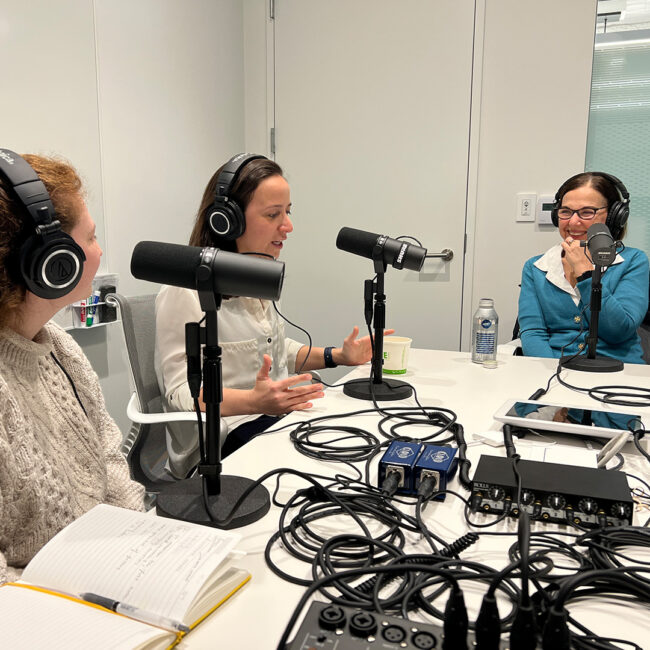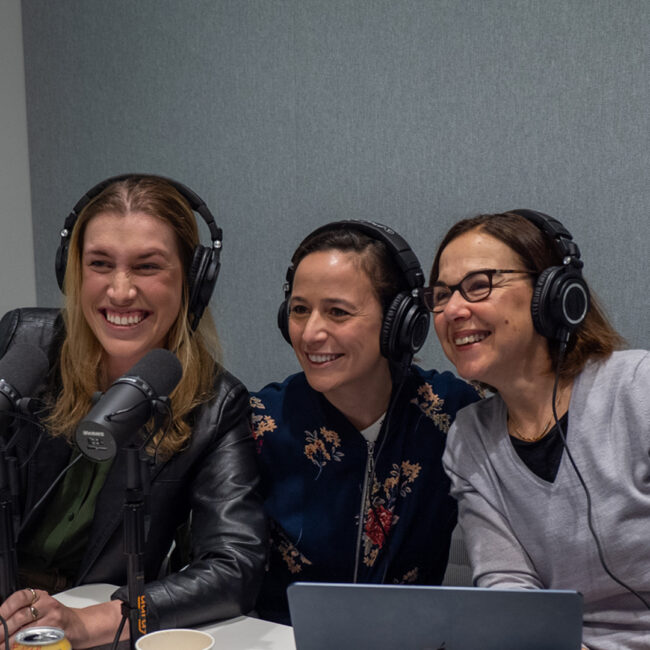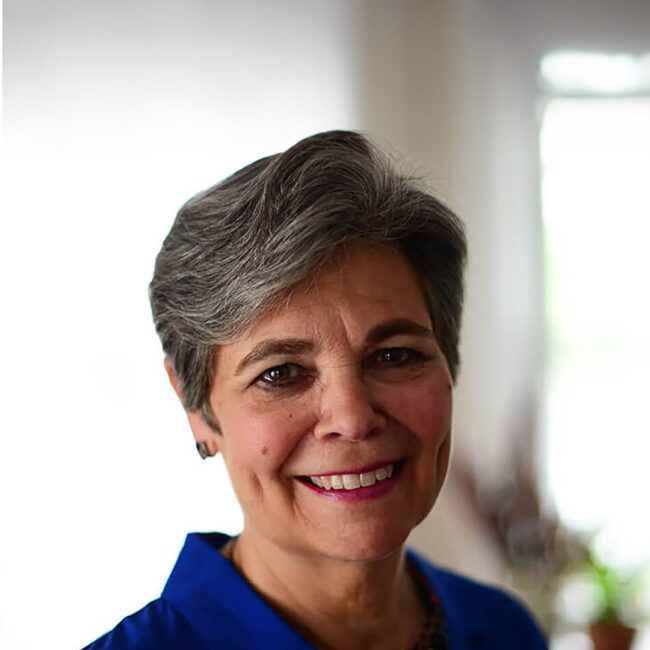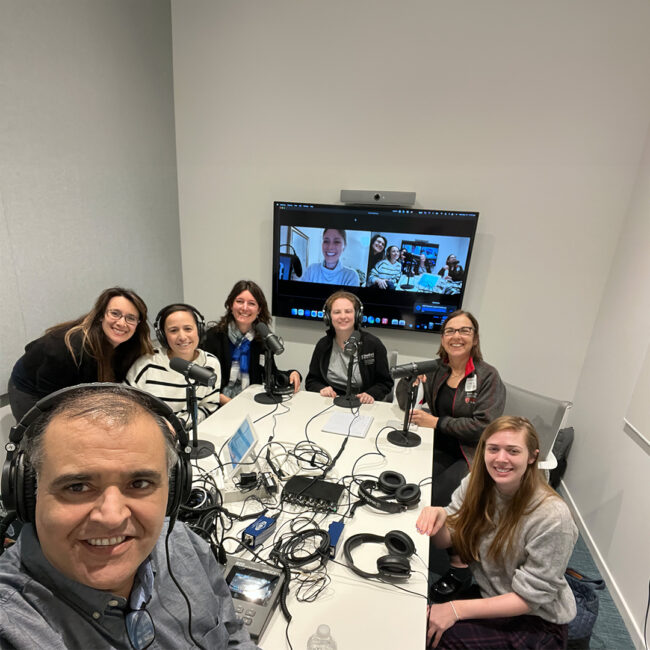
Coping with Fears After Cancer: A Conversation with Lauren Heathcote
Episode Transcript:
Lidia Schapira:
Welcome to Health After Cancer. I'm Lidia Shapira, and I'll be your host for this show. With me in the studio today are three of my colleagues, Steph Smith, a pediatric oncologist. Hi Steph.
Steph Smith:
Hi, everyone.
Lidia Schapira:
Elle Billman.
Elle Billman:
Hi, everyone.
Lidia Schapira:
And Natasha Steele.
Natasha Steele:
Hey, Lidia.
Lidia Schapira:
Today our guest is Lauren Heathcote. Professor Lauren Heathcote, who's now an associate professor at Kings College in London. But Steph and I first met Lauren in the fall of '18 when she was a postdoctoral fellow here with Dr. Simmons, studying pain. Do you remember that?
Steph Smith:
I remember it so clearly. It was a beautiful sunny afternoon in October, and Lauren I met for a coffee outside. And I think we were supposed to meet for about half an hour, but it was probably about two hours that we were talking, just so enthralled by each other's company.
Lidia Schapira:
We had such a fun time. This is all of course, pre-COVID, and we used to meet regularly with Lauren and our colleague Catherine Benedict, and Steph and I.
Steph Smith:
There were some really delicious lunches.
Lidia Schapira:
They were. We certainly gave business to our colleagues in the restaurant business in Palo Alto, but we also tackled really important topics. And one of the topics that Lauren has really helped us understand and even re-conceptualize, is how to think about pain. And I wondered, Steph, if you could just help us understand why it's so important to study pain, especially in kids.
Steph Smith:
Kids are incredibly resilient. It'll be, they're in the middle of chemotherapy or what for an adult would be completely overwhelming, and they're sitting there, running around, playing with toys. They're laughing, they're joking. They're just living their best lives. And I think one of the things that's so incredibly important as clinicians taking care of kids is to recognize when someone is having symptoms, and in particular pain. And I think the way that we oftentimes recognize that in our clinic or in the hospital, is when kids don't want to do their normal activities. And so then we really say, "Well, what's going on, and can we drill down?" Because I think identifying and managing pain and symptoms is what really allows kids to be able to thrive and continue to play, when they're getting these really intensive treatments.
Lidia Schapira:
Wow. That was a really great buildup to, really thank Lauren for being on the show. Lauren, it's so wonderful to have you today.
Lauren Heathcote:
Thank you so much for having me.
Lidia Schapira:
So Lauren, let's start by having you tell our listeners and us in the studio here, a little bit about, why you think it's so important to study pain. And, your approach to pain as an important symptom for all cancer survivors, but particularly kids and young adults.
Lauren Heathcote:
Yeah. Pain is fascinating, I think mostly because it's not what we think it is. We think that pain is happening in the part of the body where you are feeling pain, like in your arm or in your back or in your head. But pain is always happening in the brain, and actually it's not a readout of what's going on in your body. It doesn't tell you exactly what's going on, whether something's damaged or not. What it does is, it tells you whether that there's any kind of danger to your body. And the brain really is a protective machine, that tells us that something's wrong and that's why we feel pain.
Lidia Schapira:
Can you help us understand a little bit about how we as humans react to physically distressing sensations, including pain?
Lauren Heathcote:
Well, pain by its nature is meant to grab our attention. That's the function of pain. It's supposed to make us feel fear, make us feel worried, and tell us to get out of danger. So it promotes behaviors like withdrawing and avoiding something that might cause more damage to our body.
Steph Smith:
It's that classic fight or flight response, right?
Lidia Schapira:
Isn't it? Yes. And how is this experience of pain from your perspective, also experienced or processed by all of the perceptual filters, by somebody who's had a serious illness like cancer?
Lauren Heathcote:
This is a question that got me most interested in studying pain in the first place. We learned that pain is this brain output that tells us that there's something or there might be something wrong with our body. And when you've had an experience like cancer or another chronic illness, it makes sense to be worried about even every day aches and pains, like a common headache or a backache. Because, often it's interpreted in that context of, does this mean that my cancer might be coming back? Or does this mean that there's something new that's wrong with my body? So in a way, that fear and that worry about there being something wrong with the body is something that's so core to that experience of pain, that pain is such an important thing to study in this population.
Lidia Schapira:
How common is pain among the population of cancer survivors? I know we've discussed this before and we don't always see it exactly in the same way, but from your perspective, how common is pain?
Lauren Heathcote:
Pain is a lot more common than we think it is, and often that clinicians think it is. We see in sort of big studies with thousands of people that chronic pain, so that's pain that lasts for at least three to six months, but can last for many years is experienced by around 50% of cancer survivors. But high impact chronic pain, so that's pain that goes on for a long time and interferes in that individual's daily functioning, maybe their emotions, maybe their quality of life, that's experienced by sort of on average about 15% of cancer survivors.
Lidia Schapira:
Do you see that a lot in your practice, Steph?
Steph Smith:
I don't know that we ask enough to know.
Lauren Heathcote:
I think that's a really important question to start with. As a clinician, why am I not seeing or hearing more about chronic pain in my clinic, when the science shows that it's so common? There's a little bit of research suggesting that there's a lot of barriers to telling your clinician that you have chronic pain or pain that you are worried about after cancer. One of those barriers is not wanting to seem like a burden to someone that has effectively saved your life. Another one is that people might report pain because they're worried about it, potentially as a sign of recurrence. And once they've been reassured that it's not a sign of recurrence, they might then go away, but the pain is still there.
Steph Smith:
What about other symptoms in addition to pain or distinct from pain? How do cancer survivors perceive those and how do they think about them? How do they talk about them with their clinicians?
Lauren Heathcote:
Yeah, another symptom that's really common after cancer is fatigue or tiredness. And we actually see in several different diagnoses, so particularly in women who've had breast cancer, for example, fatigue is even more common than pain. And chronic fatigue can be defined in the same way, as those feelings of fatigue and tiredness that carry on for at least three to six months. What's interesting about all of these symptoms like fatigue, like pain, like itch, is that they're all similarly brain outputs that are designed to protect us in some way. And in that way, they all act as signals of threat and danger. So that cancer survivorship context potentially could ramp up the feelings of all of these physical symptoms, because there is this need to protect the body, to see when to be vigilant for signs and symptoms of recurrence, all of which might feed into that experience of fatigue and pain.
Lidia Schapira:
So as a clinician, Lauren, you just hit on an important pain point for me, because I am asked by my patients what to look for. And in responding to that question, I wonder if I'm in fact feeding in into this idea of vigilance, which then could become hypervigilance and cause distress. What do we do?
Lauren Heathcote:
That's a great question, and a question that I've learned a lot from talking with you, Lidia, and with you Steph, trying to bridge that gap between the science. Which is where we know that, being vigilant for pain, being worried about pain and fatigue could make the pain worse. But there's also a need of course, to be vigilant for signs and symptoms of things like recurrence or late effects of treatment.
We recently finished an international survey of 200 pediatric oncologists, where we ask them how they talk to their patients about monitoring their symptoms. And the responses we got were quite interesting. And similarly to what you're saying, Lidia, is that clinicians will often guide patients to monitor their symptoms as a way to empower them to be vigilant for things that they are at risk for, to give them all the information that they can use, to watch out and report things as they come up.
But what we find from the patient side is that this can be somewhat distressing, especially if that information is not very specific. So if patients are told things like, "Any symptom could be a sign of cancer. Tell us if something feels off or something feels wrong," that's a very caring message from the clinician. But for someone who's had an experience with cancer, that can be quite an ambiguous and distressing message, when often everything feels off, and everything feels wrong after you've finished cancer treatment. So one of the things that we are thinking might be helpful is if the clinician can provide slightly more structured guidance on the kinds of things, the kinds of symptoms that they might want to know about, and reassurance about the kinds of things that maybe wouldn't be a cause for concern, like for example, a headache or a cough that goes away in a few days.
Lidia Schapira:
So what advice would you give a patient listening to this podcast, about how to ask these questions to their clinicians so that they can have the right conversation?
Lauren Heathcote:
Firstly, I think it's important for patients to feel empowered to tell their clinicians about symptoms that they're worrying about. Often, we find that sitting with and ruminating about those symptoms can just cause more distress over time. So having those clear pathways where patients can report symptoms of concern is firstly important.
Secondly, I think it's important that patients are able to express that it's not just the symptom itself that's bothering them, but the worry about that symptom. As I was talking about earlier, sometimes what can happen is if a patient reports a symptom that they're worried about, like a new ache in their hip, for example, they might have a scan or a test to show that everything's fine, but the worry is still there. So one thing a patient could say to their clinician is, "I worry about this symptom. Sometimes I think that when I have some new ache or pain or some new physical sensation," and you could be specific about that, "I worry that it means that my cancer has come back. How do I manage that worry?"
Lidia Schapira:
So let's talk a little bit about managing that worry. I know you've done a lot of work in fear and fear of cancer recurrence, and other associated fears. What kinds of interventions have you found to be useful?
Lauren Heathcote:
We have some really good evidence-based interventions to help people manage fear of cancer recurrence. Fear about the cancer coming back is incredibly common, and we find in some studies that up to 99% of the sample will report some amount of fear about their cancer coming back or having a new cancer, for example, as a consequence of treatment. And we tend to find that in between 20 and 30% of patients, this fear can be really severe and can impact their quality of life, and their functioning and their mood.
But as I say, luckily we do have some evidence-based interventions to help people manage this fear. There's some brilliant research coming out of Australia, Canada where people are translating these interventions into digital tools, and this means that they might be more widely accessible soon. But some of the targets of these interventions are helping people to identify triggers. "When do I worry more about my cancer coming back?" Another target in these interventions is giving people worry periods, a certain time of day when they're going to allow their worries to come in and those fears, "What would happen if my cancer came back? How would I manage it?" But then to have other times of the day where they know that they'll worry about it later, so they don't have to worry about it now, and we find that that can be really helpful strategy for stopping those worries from creeping in.
Lidia Schapira:
One of the things that leads people, in my experience, to worry a lot is the anticipation of surveillance scans or testing. What advice do you have for me as a clinician, and for me to give my patients?
Lauren Heathcote:
Anxiety is this word that's becoming increasingly common. That fear, that worry, that anxiety around surveillance scans. Sometimes that fear and worry can happen days or weeks before a scan. Often, it increases and peaks on that day of the scan, and then often it will go away if you've received reassuring results. But sometimes it lingers. And although anxiety is incredibly common, potentially a universal experience, science is starting to suggest that there might be something we can do about it. It's not just a byproduct of the cancer experience, but maybe there are ways to actually help people to manage that fear and anxiety, that creeps in around the time of those scams.
Lidia Schapira:
I want to bring in Natasha into the conversation. She's been so open in sharing some of the experiences that as a cancer patient, she has with scans and this idea of how to control the emotion, and also how to prepare for results. What is it like for you?
Natasha Steele:
I think it's evolved a little bit over time. So for me, my diagnosis came through a chest x-ray and I received the results on my cell phone through my healthcare app. And it was totally an unstructured and out of control way to receive really serious health information. And so, now around things like scans, or even more benign interactions like lab testing or even getting a survey from my medical providers that kind of pings my app, that I have a message in my inbox, some of that same fear and worry is generated.
And so I think that for me, I've had to first really acknowledge that over time this has evolved and I've gotten a little more comfortable sort of getting information, getting scans, getting lab results, because I know what to anticipate. I know that I'm going to get an email and then I'm going to get a message, and then I'm going to access that information. And I've worked with my medical providers to set expectations. For example, I get scans on the day that I see my providers and I request specifically not to get that information released, until I've seen them face to face. And that's only been something that I've learned to do through the alternative experience.
Lauren Heathcote:
Yeah, one of the brilliant pediatric oncologists that I worked closely with at Stanford, Dr. Sheri Spunt, what she started doing with some of her patients was she would give them the results of their scans, hopefully, the reassuring results as soon as she entered the room. And these things like having scans on the same day as you get the results or getting the results straight away, they might seem like very small things, but actually, we're learning that they're making a huge difference to helping people manage that fear and anxiety around scans.
I also think what you said about that technology piece is really important. We now have these amazing technologies where you can access your health data at the push of a button through an app on your phone, and that has amazing advantages for healthcare, but potentially negative implications for things like receiving cancer scan results. It can be incredibly scary to think that you might have an email popup that could deliver that kind of information. So there's a lot of work and research that we need to do into how to use these technology advancements to support these vulnerable populations, and these things like stressful waiting periods and receiving important health results.
Natasha Steele:
Yeah, and I've even heard some oncologists advise their patients not to, for example, get scanned at the end of the week, because it might take a few days to interpret their data and then they might not know till Monday or Tuesday of the following week. And so, I do think while we figure out how this technology is going to interface with the way we deliver healthcare, there are sort of hacks we can as providers, think about to equip our patients with strategies to reduce a lot of the stress around these really important milestones.
Steph Smith:
And I think, it becomes increasingly complex when we think about caregivers as well and the dynamic at different ages, depending on the age of the patient who's getting a scan or getting one of these results. And autonomy when you have an electronic medical record release results, perhaps to a parent, and perhaps the child is less than 16 or 18, doesn't have access to their own record, and the parent is therefore getting this information ahead of the child, ahead and distinct from the interaction with the clinician, where you think about that triad of patient, parent, and clinician. So, so complex.
Lauren Heathcote:
It's definitely complex. And one of the things that excites me about this pediatric world, is that children and adolescents are digital natives. They use technology all day every day, and that gives us huge opportunities for delivering interventions for things like scanxiety, using those same devices like their smartphones. And there's some exciting work that's just starting, and we are starting to do a little bit of this in our lab here in London as well, on what's called just in time interventions. So if you can track that fear and anxiety in those days leading up to the scan by using a smartphone, can you then deliver a strategy or a mini intervention just at the moment when the young person needs it the most?
Elle Billman:
This is so interesting for me to hear, because I have a somewhat different experience I think, than a lot of cancer survivors, because I was diagnosed with cancer when I was so young and the fact that it also was a blood cancer. So there is not so much scans, but there are blood draws. I think my parents did a really good job of protecting me from the idea that you can relapse. In part, their protection and part, me also just being very young. So I never really experienced any scanxiety or any fear of recurrence when I was going in for blood draws.
I do think about risks I have now as a cancer survivor just from the exposures I had to certain medications. So I really liked learning about the period of worrying that you mentioned, Lauren, and I think that is really useful, and I'll definitely try to use that going forward.
Lauren Heathcote:
Thank you for sharing that. I think we need a lot more research into the experience of fear of recurrence and scanxiety in child and pediatric populations. One of the things that you just said seems to come through in some of our research too, that quite young children report generally very low levels of fear of recurrence. The trouble is that those same individuals might start developing more fears and worries as they get older, as they start to understand their experience from a different developmental lens. And it might be that later on in life is when we need to support these young people with these fears, with these worries, bring them back into the system and help deliver those interventions then.
Steph Smith:
I think that is so, it just hits home so much to me to think about the individuality, and the need to continually reassess someone's worries and fears as they go through different developmental stages. As they move, not just from months out of a cancer diagnosis or treatment, to years, to decades. I think clinically, we see so often in the pediatric cancer setting that it's actually the parents who have so much fear of recurrence, even decades after their child was treated and putatively cured. And it may be that some of that fear could translate into some of those interactions that the child then has when they're a young adult and starting to think about the need for exactly as you mentioned, screening for secondary effects or potential late effects. So it's again, thinking about this whole family unit and how these things change over years and decades, after someone goes through this experience.
Lauren Heathcote:
That really aligns with some of our research, Steph. We find that on average, parents report more fear of recurrence than their children. And we've also done some research that shows that parents who are more worried and more fearful of their child's cancer coming back, which is a very normal understandable response, often struggle to know how to talk to their children about fear of recurrence. So there's really important work that needs to be done in translating these fear of recurrence interventions that we have, into helping parents manage their own fear, but also understand how they can talk to their child about those fears.
Natasha Steele:
I think there's such an interesting balance to be struck between reducing fear of recurrence and maintaining vigilance, because I think that people who survive cancer, who have been treated for cancer are different than the general population. And I hear it looks different across different ages and populations, but I think there's a tendency, at least that I've observed in the pediatric population or even in the adult, to try and make things normal again. To say, "Everything's okay now. I want you to go back to normal life."
And how do you balance? And I think a lot about this as a clinician and as a cancer survivor. How do you balance wanting to give someone back the idea that their bodies are healthy and they can move on, with maintaining this idea that something very real happened and they have to acknowledge that in a way that sort of promotes their health and their vigilance, and their stewardship around their bodies.
Lidia Schapira:
So to bring this absolutely fantastic conversation to a close, I would say, I would offer this. That a lot of it goes back to what Lauren was saying at the beginning, which is that we need to think about how we're processing these experiences as well, and what our minds can do to help us become more confident to help cancer survivors manage this very complex set of experiences. And I personally, really enjoyed this sort of multi-generational thought experiment about what adults feel when their child has cancer, what adults feel when they themselves have cancer, and then what they can communicate to their clinicians, and to their families and to their kids.
We'll leave that for another conversation, but I think this brings it all together. Sort of that all of us are facing these issues in the clinic, and technology is something that is changing the conversation. It's changing the participants, it's changing the speed and the mechanisms through which we communicate with each other. So there's so much to do. And Lauren, I am so excited about the research you're doing.
Lauren Heathcote:
Thank you. The research we're doing together.
Lidia Schapira:
It's been a lovely conversation, and I want to thank you all for being in the studio with me today.
Steph Smith:
Thank you, Lauren.
Lauren Heathcote:
Thank you, everyone.
Elle Billman:
If you enjoyed this episode and you'd like to help support the podcast, please share it with others, post about it on social media, and leave a rating or review. Your hosts today were Elle Billman, Lidia Shapira, Stephanie Smith and Natasha Steele. This podcast is produced by the Stanford Medicine Ed Tech team, our producers For this episode, were Lidia Shapira and Deila Bumgardner. Our creative director is William Bottini. Our sound engineer is Bindu Madhava. This episode was edited by Grace Sextro. Our guest today was Lauren Heathcote. For more resources and information from our hosts and guests, please visit our podcast website at www.healthaftercancer.com. Thank you for listening.
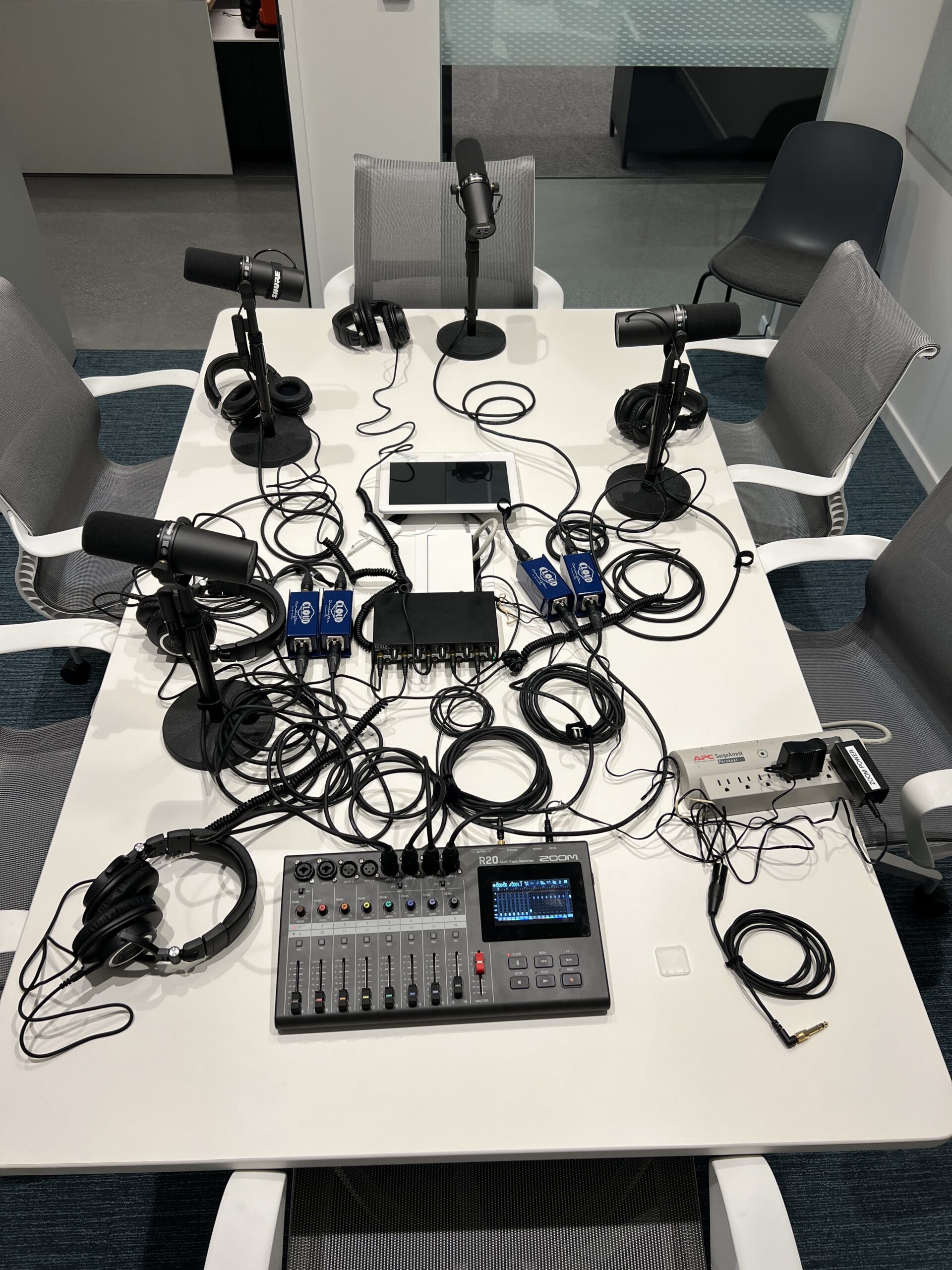
Meet your hosts:
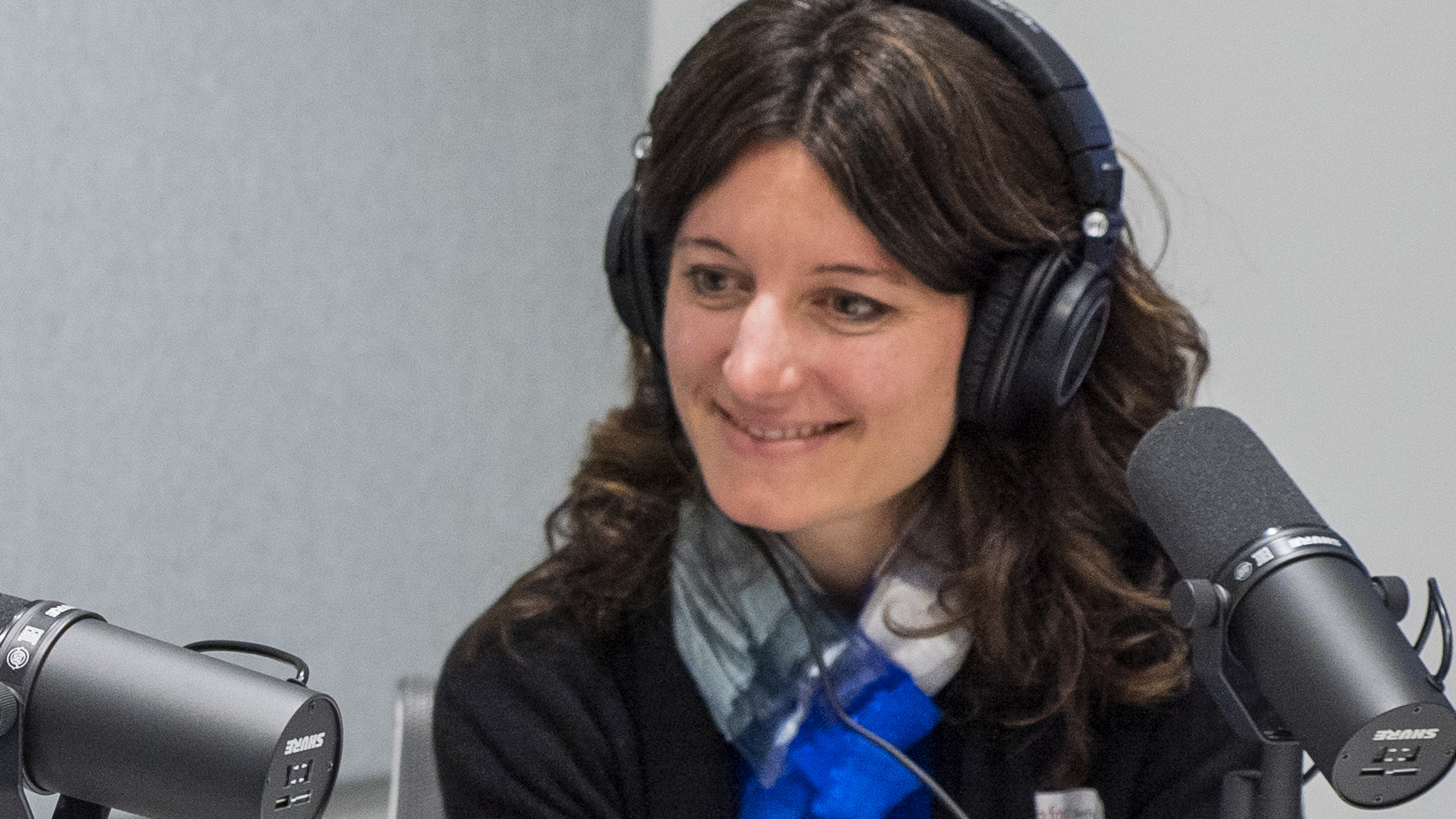
Stephanie Smith
Stephanie is a pediatric oncologist and clinical researcher with a focus on cancer survivorship at Stanford Medicine.
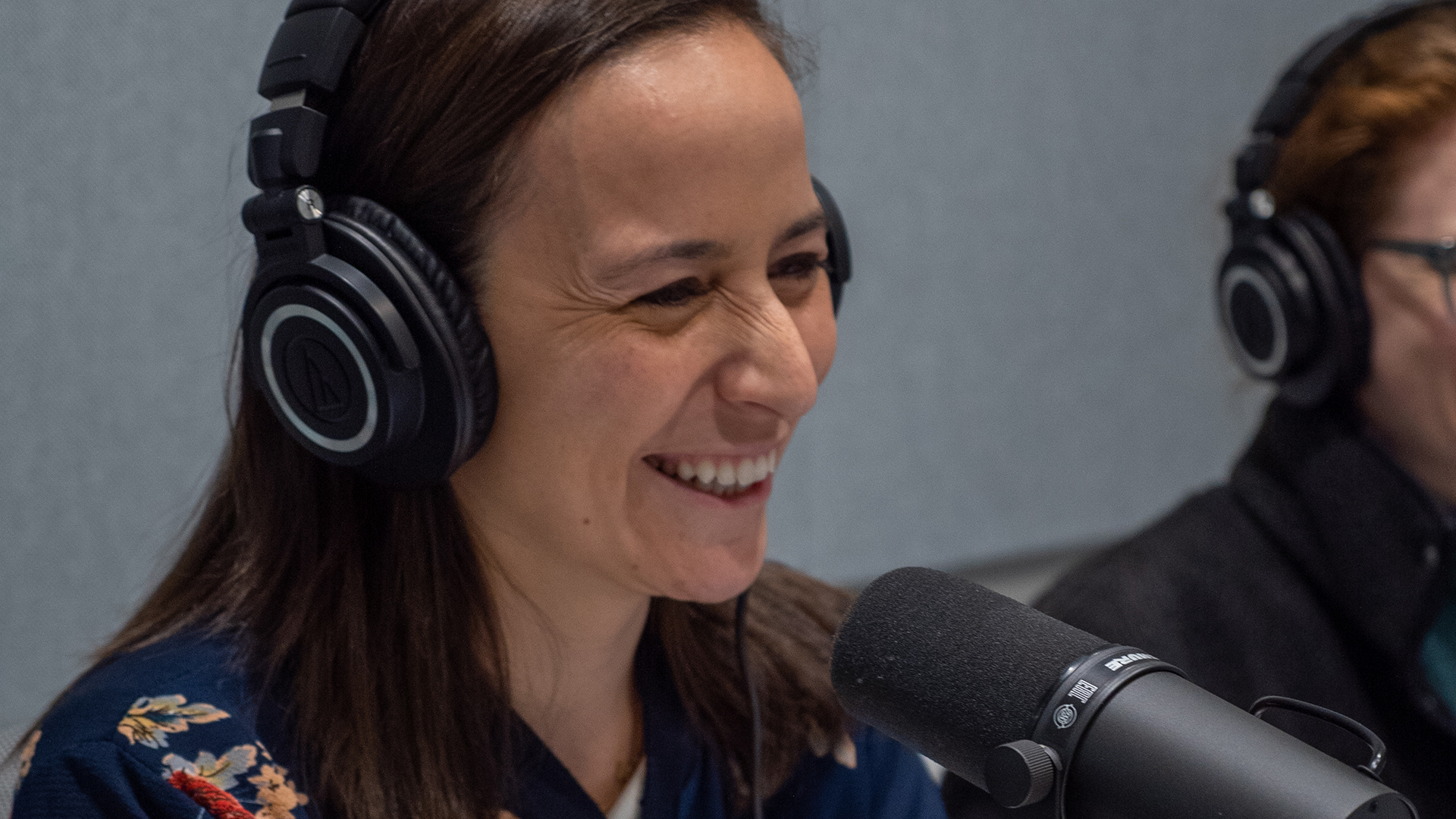
Natasha Steele
Natasha is a young adult cancer survivor, an internist and researcher, and an incoming faculty member at Stanford Medicine.
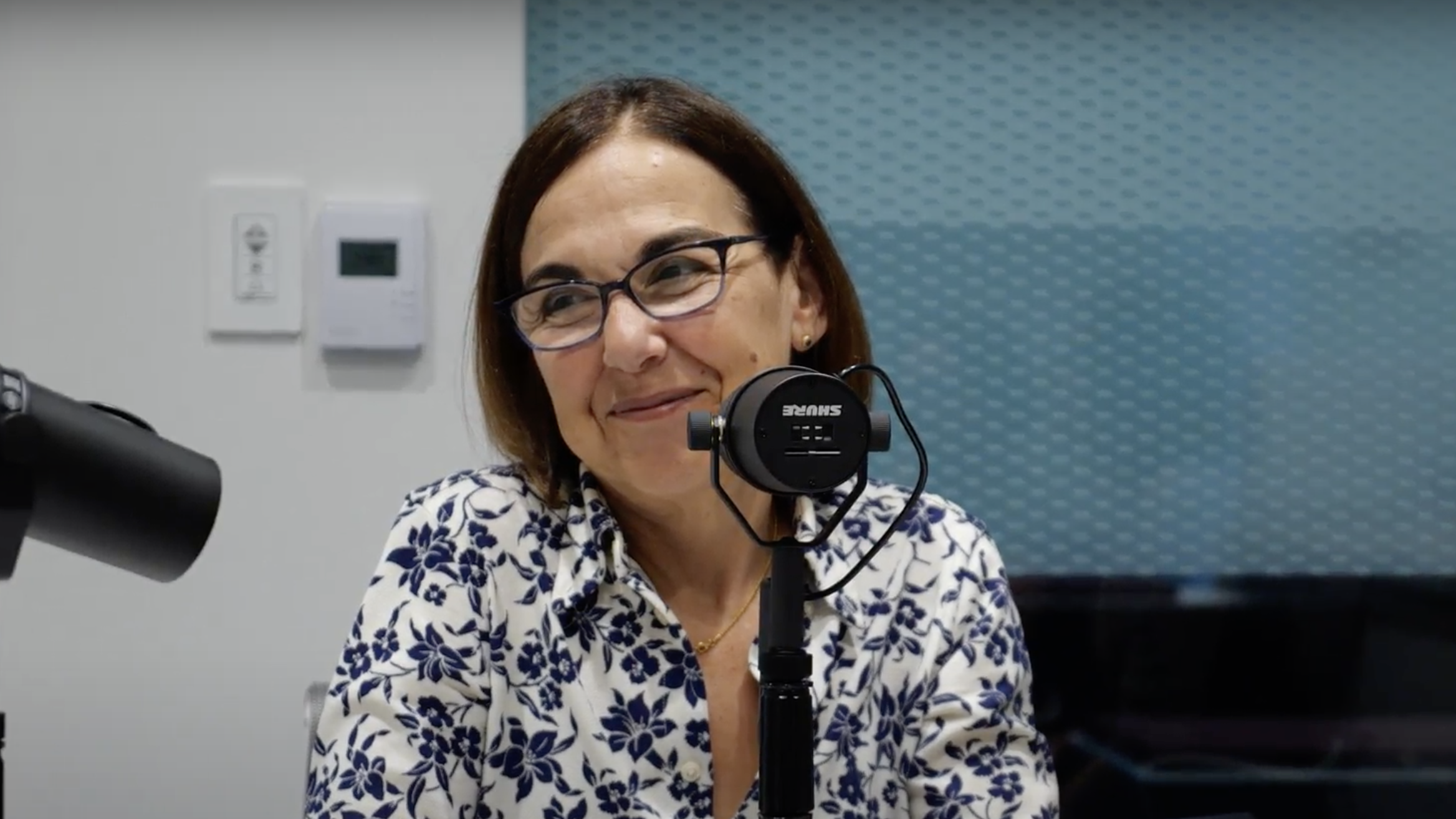
Lidia Schapira
Lidia is the director of the Stanford Cancer Survivorship Program and the executive producer of Health After Cancer.


